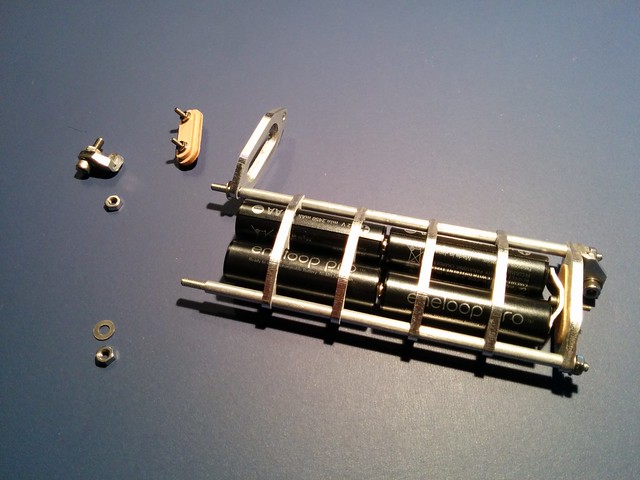What does a lithium battery produce?
Oct 21, 2019 Pageview:1984
Lithium batteries stand separated from other battery sciences because of their high vitality thickness and minimal effort per cycle. In any case, the lithium battery is an uncertain term. There are around six regular sciences of lithium batteries, all with their very own one of a kind focal points and drawbacks. For sustainable power source applications, the dominating science is Lithium Iron Phosphate, which is also known as LiFePO4. This science has incredible safety, with extraordinary warm soundness, high current appraisals, long cycle life, and resistance to abuse.
LiFePO4 is very steady lithium chemistry when contrasted with practically all other lithium sciences. The battery is collected with a normally sheltered cathode material, which is highly been known as iron phosphate. Contrasted with other lithium sciences iron phosphate advances a solid sub-atomic bond, which withstands extraordinary charging conditions, drags out cycle life, and keeps up compound uprightness over numerous cycles. This is the thing that gives these batteries their extraordinary warm security, long cycle life, and resistance to abuse. LiFePO4 batteries are not inclined to overheat, nor are they arranged to 'warm out of control' and along these lines do not over-heat or touch off when exposed to thorough misusing or unforgiving natural conditions.
What does a lithium battery have?
Dissimilar to overwhelmed lithium and other battery sciences, Lithium batteries don’t vent hazardous gases, for example, hydrogen and oxygen. There is additionally no threat of presentation to burning electrolytes, for example, sulfuric corrosive or potassium hydroxide. Much of the time, these batteries can be put away inbound territories without the danger of blast and an appropriately structured system that does not require dynamic cooling or venting.
Lithium batteries are a get together made out of numerous cells, similar to lithium batteries and numerous other battery types. Lithium batteries have an ostensible voltage of 2V/cell, while lithium battery cells have an ostensible voltage of 3.2V. Along these lines, to accomplish a 12V battery you will commonly have four cells associated with an arrangement. This will make the ostensible voltage of a LiFePO4 12.8V. Eight cells associated with an arrangement make a 24V battery with an ostensible voltage of 25.6V and sixteen cells associated with an arrangement make a 48V battery with an ostensible voltage of 51.2V.
What is the role of lithium batteries?
Lithium batteries are regularly used to directly supplant the lithium batteries since they have fundamentally the same as charging voltages. A four-cell LiFePO4 Battery will regularly have a maximum charge voltage between 14.4-14.6V. Commonly, when the battery arrives at the maximum charge voltage it no longer should be charged. The release qualities of LiFePO4 batteries is additionally one of a kind. During release, lithium batteries will keep up a lot higher voltage than lithium batteries commonly would under burden. It is normal for a lithium battery to just drop a couple of tenths of a volt from a full charge to 75% released. This can make it hard to tell how a lot of limits has been utilized without battery observing hardware.
What is the challenge of lithium batteries?
A huge preferred position of lithium over lithium batteries is that they don’t experience the ill effects of shortage cycling. Basically, this is the point at which the batteries cannot be completely energized before being released again the following day. This is a major issue with lithium batteries and can advance critical plate debasement if over and over cycled thusly. LiFePO4 batteries should not be completely energized consistently. Indeed, it’s conceivable to marginally improve generally speaking future with a slight halfway charge rather than a full charge.
Benefits of lithium batteries
There are lots of benefits of lithium batteries, while some of them are as follows:
· Efficiency
Efficiency is a significant factor when structuring solar-based electric frameworks. The round-trip effectiveness with the normal lithium battery is about 80%. Different sciences can be much more terrible. The round-trip vitality productivity of a Lithium Iron Phosphate battery is as much as 95-98%. This by itself is a huge improvement for systems kept from sun oriented power during winter, the fuel investment funds from generator charging can be colossal. The retention charge phase of lithium batteries is especially wasteful, bringing about efficiencies of half or even less. In this case, it is imperative to ensure the individual cells don’t over-discharge.
· Improved Reliability and Safety
The reliability and safety of lithium batteries is a major concern, therefore all gatherings ought to have an incorporated Battery Management System. This system that screens, assesses, balances, and shields cells from working outside the Safe Operating Area. It is a fundamental safety part of a lithium battery framework, checking and securing the phones inside the battery against over current, over or under voltage, over or under temperature and many more.
Responsibility of BMS
The fundamental responsibility of the BMS is to adjust the pack during charging, ensuring all phones get a full charge. The phones of a LiFePO4 battery would not consequently adjust toward the end of the charge cycle. There are slight varieties in the impedance through the cells and in this way no cell is 100% indistinguishable. In this manner, when cycled, a few cells will be completely energized or released sooner than others. The change between cells will increment fundamentally after some time if the cells are not adjusted.
In lithium batteries, current will keep on streaming in any event, when at least one of the cells is completely energized. This is an outcome the electrolysis occurring inside the battery, the water parting into hydrogen and oxygen. This present serves to completely charge different cells, hence normally adjusting the charge on all cells. Be that as it may, a completely energized lithium cell will have a high opposition and next to no present will stream. The slacking cells will in this way not be completely energized. During adjusting the BMS will apply a little burden to the completely energized cells, keeping it from overcharging and enabling different cells to make up for lost time.
So, consider all the above-described aspects and make sure to use lithium batteries in your devices to make them safe and secure.
- Prev Article: When to charge a Li-ion battery?
- Next Article: What does CR mean on lithium battery?
Leave Message
Hottest Categories
-
Hottest Industry News
-
Latest Industry News











